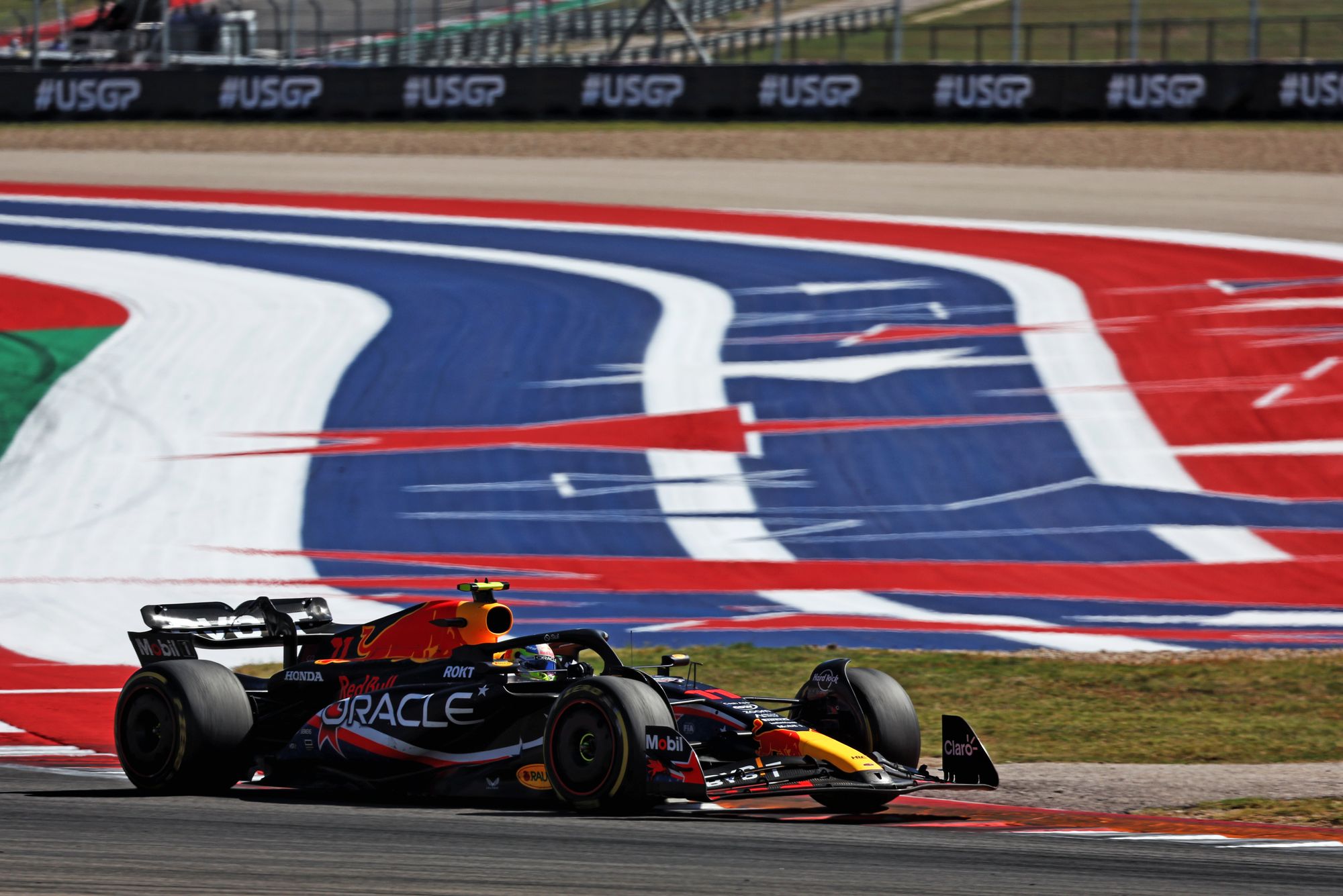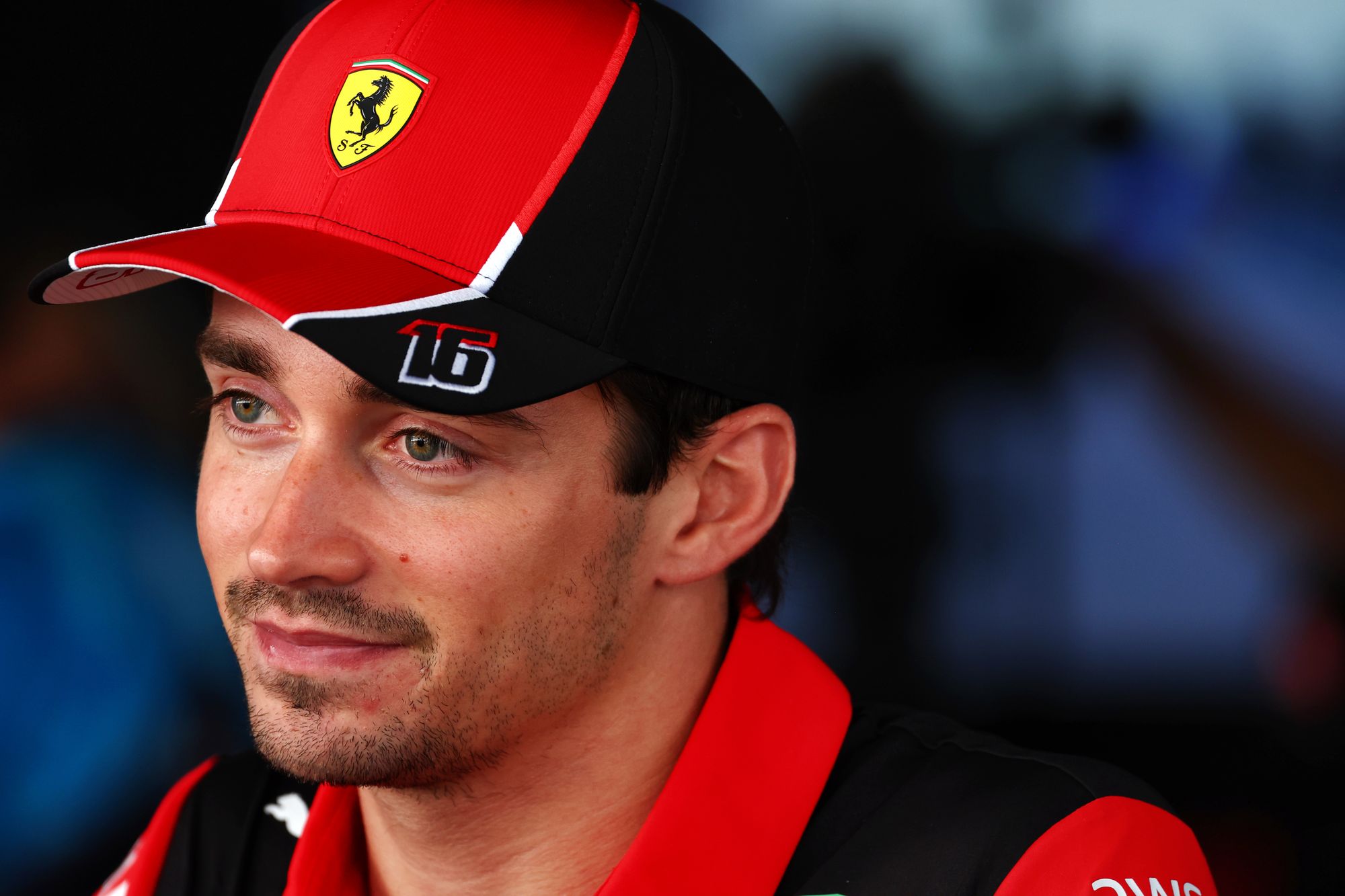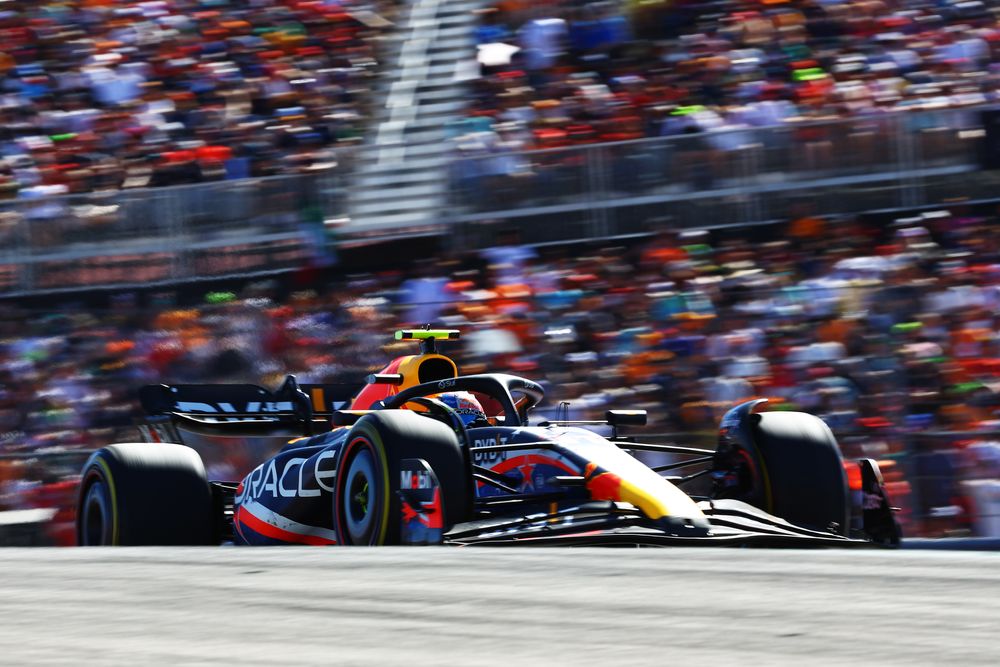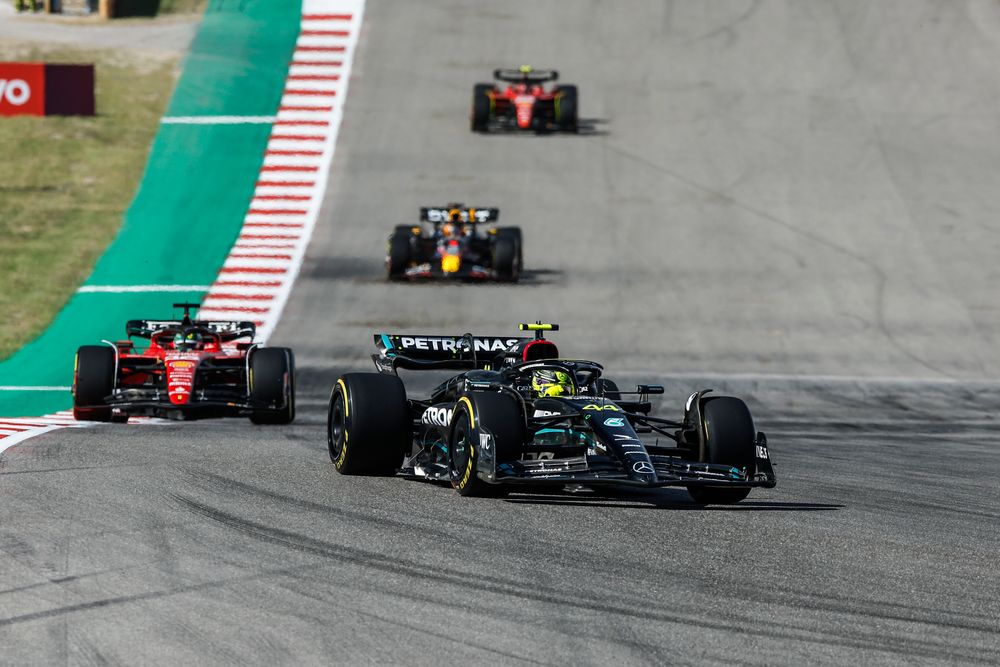Up Next

The FIA will take action to ensure the problematic Turn 6 right-hander in Austin will be policed for track limits next year after complaints that certain drivers, including Red Bull’s Sergio Perez and Williams driver Alex Albon, were getting away with routinely exploiting them.
Albon was investigated for track limits, but the FIA stewards said that “the evidence at hand is not sufficient to accurately and consistently” prove breaches.
The Race understands this is because while there is a camera pointing towards Turn 6, the undulations of the circuit mean it only has a clear view of the exit.
The FIA has acknowledged that drivers may have exceeded track limits based on onboard footage, and has promised to update its monitoring infrastructure for 2024. It’s likely this will improve the addition on the other side of the track that will give a clear view.
An FIA spokesperson said: "Following post-race analysis of the 2023 United States Grand Prix, it has been noted that several drivers may have exceeded track limits on the inside of Turn 6.
“In line with the decision of the stewards (Document 59) relating to an alleged breach of the regulations at the inside of this corner [by Albon], which stated 'the evidence at hand is not sufficient to accurately and consistently conclude that any breaches occurred', the FIA will update its monitoring infrastructure to provide enhanced coverage to ensure that any potential breaches can reliably be identified during the race in future."

Perez’s driving came under a lot of scrutiny on social media in the days after Austin, as onboard footage and screengrabs emerged of him seemingly committing repeat offences through Turn 6 – cutting the kerb consistently on the right-hand side. Multiple teams had also raised concerns about the onboard footage.
Certain angles from onboard footage are not clear-cut for policing track limits though and that is why such images tend to be supported by electronic loops and/or CCTV footage as well.
However, to ensure consistency the FIA insists on having clear and emphatic evidence on track limits. As onboard footage doesn’t show the rear wheels, it can only be inferred that a breach has occurred. Footage from cars following can also be referenced, but as the FIA wants to be consistent in the standard of evidence it uses to judge these offences, that isn’t considered precise enough.
While Perez and other drivers weren’t investigated, unlike Albon, they also escaped punishment because Turn 6 couldn’t be policed on the inside.
McLaren driver Lando Norris admitted that the lack of policing at Turn 6 led to him also exceeding track limits as he was aware of the limitation.
“Apparently it’s not clear enough,” said Norris when asked by The Race about the policing of Turn 6 at Austin.
“For anyone who has a decent idea, it’s so clearly off the track. The ruling is it has to be clear enough for the FIA – clear from an actual view that both tyres are off. An onboard camera doesn’t prove anything, even though you might see the white line over here. If the rear wheel might be in, you can’t classify it as being out. So they basically have to put in more cameras that are like on the outside so you can see the white line, you can see where the car is.
“Or you can have a camera that looks down the line so you’re able to see when all tyres go over. But that’s pretty difficult to have on every corner or on every angle.
“I still think in general they should be stricter on penalties, that includes track limits.
“At Turn 6, I did it as well to be honest. I knew it was a corner they couldn’t penalise me because they set the precedent in previous tracks of ‘if you can’t visually see it, you’re going to get away with it’.
“You have to know the grey areas and the things you can get away with and that was one of them. So to everyone that did do it, fair play.”
Ferrari driver Charles Leclerc also raised concerns about the policing at Turn 6 and called for a solution for next year.

He didn’t name Perez but hinted that he had concerns about the Red Bull driver’s frequent cutting of the track there.
“We really need to look into that to find a solution because I don’t think it’s a good look in general to have these kinds of things,” said Leclerc when asked by The Race about Perez cutting the track.
“There are a few other examples in the past where there wasn’t exactly the right camera to look on one particular corner and then you can go wide and nothing happens, but if you go one millimetre wider in the corner that is controlled, you get pinged and it can ruin your weekend.
“So on these kind of things, we’ll have to discuss with the FIA to try and understand what they can do in order to have a better system for it to be more regular because looking at one particular driver in Turn 6 in USA yeah…for me the evidence of the onboard was clearly enough to judge that [he was] off-track.”
The FIA is reasonable in seeking a high burden of proof in terms of track limits violations, although Leclerc and Norris are right that the onboard evidence was clear even if it didn’t actually show the rear wheels being off the track. However, that will no longer be a problem next year if there are extra cameras in place and the principle of ensuring there is definitive, visual proof of breaches is a sound one.
Track limits are an enduring problem and as Leclerc says “there’s definitely been some steps forward”. However, particularly at circuits like Austin, more work needs to be done to ensure enforcement is possible.
And as Norris indicated, drivers not only will but actually must take advantage of any weaknesses in the policing system. And while it’s easy to criticise the FIA, and there are times when that’s legitimate, it’s also indicative of a whole series that’s still grappling with the challenges of track limits.





